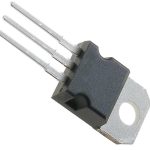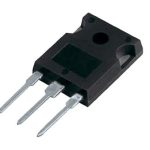The 2N3055 transistor, a versatile and widely used electronic component, has established its place in the world of power electronics. Its ability to handle high voltages and currents makes it an integral part of numerous applications, ranging from audio amplifiers to power supplies. In this blog post, we will delve into the details of the 2N3055 transistor, exploring its features, applications, alternatives, and more.
What is 2N3055?
The 2N3055 is a popular NPN (Negative-Positive-Negative) power transistor widely used in various electronic circuits. It is a silicon-based transistor that belongs to the bipolar junction transistor (BJT) family. The 2N3055 transistor is known for its robustness, reliability, and versatility, making it a staple component in many applications.
What is 2N3055 used for?
The 2N3055 transistor finds extensive use in power amplifier circuits, voltage regulators, power supplies, motor control systems, and other high-current switching applications. Due to its ability to handle relatively high voltages and currents, it is particularly suitable for applications requiring medium to high power levels. Its versatility has made it a favorite choice among hobbyists, electronics enthusiasts, and professionals alike.
Features
- High Power Handling: The 2N3055 can handle currents up to 10A and voltages up to 60V, allowing it to handle a wide range of power requirements.
- Robust Construction: This transistor is housed in a metal can package, which helps dissipate heat efficiently and provides mechanical protection.
- Thermal Protection: The 2N3055 features a built-in thermal shut-down mechanism that protects it from overheating, ensuring reliable operation.
- Low Saturation Voltage: The low saturation voltage of the 2N3055 minimizes power losses and improves overall efficiency.
- Wide Temperature Range: With a temperature range of -65°C to +200°C, the 2N3055 can operate reliably even in harsh environments.
PCB symbol and Footprint


Datasheet
Datasheet Download here: 2N3055 Datasheet
Compare 2N3055 With Others
2N3055 vs TIP3055
The first notable difference is the packaging. The 2N3055 is available in a metal can package, while the TIP3055 comes in a plastic TO-247 package. This distinction affects factors such as heat dissipation and mounting options.
Another difference lies in their voltage ratings. The 2N3055 has a maximum voltage rating of 60V, whereas the TIP3055 can handle higher voltages, typically up to 100V. This makes the TIP3055 more suitable for applications that require higher voltage levels.
Additionally, the TIP3055 generally has a slightly higher current rating compared to the 2N3055. It can handle currents up to 15A, whereas the 2N3055 is typically rated for currents up to 10A. If your application requires higher current handling capability, the TIP3055 might be a better choice.
MJ2955 vs 2N3055
The MJ2955 is a complementary power transistor to the 2N3055. While the 2N3055 is an NPN (Negative-Positive-Negative) transistor, the MJ2955 is a PNP (Positive-Negative-Positive) transistor. These two transistors are often used together in pairs to form a push-pull amplifier configuration.
In terms of voltage ratings, current handling capabilities, and packaging, the MJ2955 is quite similar to the 2N3055. They both have a maximum voltage rating of 60V and can handle currents up to 10A. The main difference lies in their polarity and pin configurations, which are essential when using them in complementary configurations.
2N3055 vs 2N3773
One of the key differences is the power handling capability. The 2N3055 is typically rated for a maximum power dissipation of around 115W, while the 2N3773 can handle higher power levels, often up to 150W. If your application requires higher power handling, the 2N3773 might be a better choice.
Additionally, the 2N3773 has a higher voltage rating compared to the 2N3055. It can withstand voltages up to 160V, whereas the 2N3055 is limited to 60V. Therefore, if you need to work with higher voltages, the 2N3773 would be more suitable.
However, it’s important to note that the 2N3773 is generally more expensive than the 2N3055. Therefore, if your project doesn’t require the higher power handling or voltage ratings, the 2N3055 might be a cost-effective option.
2N3055 vs 2SC5200
The 2N3055 and 2SC5200 are power transistors commonly used in audio amplifier circuits. While they serve similar purposes, there are a few differences that set them apart.
One significant difference is the voltage rating. The 2N3055 has a maximum voltage rating of 60V, whereas the 2SC5200 can handle higher voltages, typically up to 230V. This makes the 2SC5200 more suitable for applications that require higher voltage amplification.
Another difference lies in their power handling capabilities. The 2SC5200 is designed to handle higher power levels compared to the 2N3055. It can dissipate around 150W, while the 2N3055 is limited to approximately 115W. If your audio amplifier circuit demands higher power output, the 2SC5200 might be a better choice.
Furthermore, it’s worth noting that the 2SC5200 tends to have a higher current gain compared to the 2N3055. This means it provides better amplification characteristics and can drive larger speaker loads with ease.
How to use 2N3055 NPN Power Transistor
To use the 2N3055 NPN power transistor effectively, you need to follow these general steps:
- Identify the pin configuration. The 2N3055 typically has three pins: the emitter (E), the base (B), and the collector (C). Consult the datasheet or markings on the transistor to determine the pin layout.
- Connect the emitter terminal to the ground or the negative terminal of your power supply.
- Connect the base terminal to the control signal source or a suitable driver circuit through a current-limiting resistor. This resistor is necessary to protect the base-emitter junction from excessive currents.
- Connect the collector terminal to the load, such as an amplifier, motor, or any other high-power device you want to control.
- Provide the necessary power supply voltage to the collector and load circuitry while ensuring it does not exceed the maximum voltage rating of the transistor.
- Apply the control signal or drive voltage to the base terminal to activate the transistor and allow current flow between the collector and emitter terminals.
Remember to consider heat dissipation requirements and provide adequate cooling measures, especially when operating at high currents or voltages.
Alternative to 2N3055
While the 2N3055 is a widely used power transistor, there are several alternatives available in the market that offer similar functionality and performance. Some popular alternatives to the 2N3055 include the TIP3055, MJ2955, 2N3773, and 2SC5200. These alternatives differ in terms of voltage ratings, current handling capabilities, packaging options, and other specifications.
Choosing the right alternative depends on the specific requirements of your project.

FAQs
What is the PNP equivalent of 2N3055?
The PNP equivalent of the 2N3055 transistor is the MJ2955. These two transistors are complementary pairs, meaning they can be used together to form push-pull amplifier configurations.
What is the rating of 2N3055?
The 2N3055 transistor typically has a maximum voltage rating of 60V and a maximum current rating of 10A. These ratings indicate the maximum voltage and current levels the transistor can handle without being damaged.
What is the current gain of 2N3055?
The current gain, also known as hFE or beta (β), of the 2N3055 transistor typically falls within the range of 20 to 70. The actual value may vary slightly depending on the manufacturer and specific batch of transistors. The current gain determines the amplification capabilities of the transistor, indicating how much the collector current increases relative to the base current.
Conclusion
2N3055 stands as a reliable and widely adopted choice for power applications. With robust construction, high power handling capabilities, and wide availability, it continues to serve as a fundamental component in various electronic circuits. Whether you are an electronics enthusiast or a professional designer, understanding the intricacies of the 2N3055 transistor empowers you to make informed decisions when selecting components.



